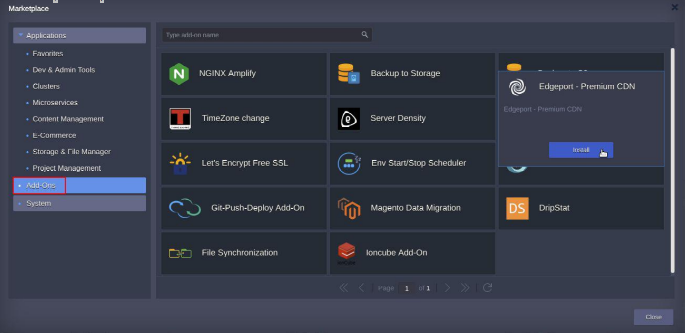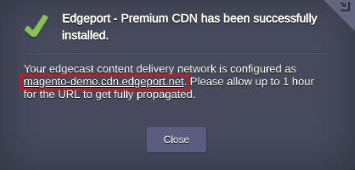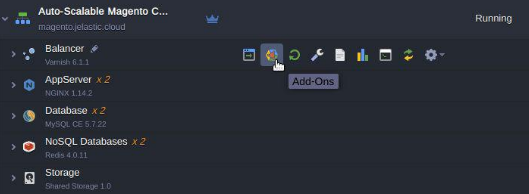-
.Net
-
Backup
-
Data Storage Containers
-
Docker Containers
-
Environment Management
- Swap-Domains
- Clone Environment
- Create Environment
- Environment Aliases
- Environment Aliases
- Environment Migration between Regions
- Environment Regions
- Environment Transferring
- Environment Variable
- Environment Variables
- Environment Variables(Apache meaven, Memcached)
- Environment Variables(Go)
- Environment Variables(JAVA)
- Environment Variables(Load Balancer)
- Environment Variables(Node.js)
- Environment Variables(PHP)
- Environment Variables(Ruby)
- How to Migrate a WordPress Site to BitssCloud PaaS
- How to migrate my environments from another Jelastic provider?
- HTTP Headers
- Java VCS Deployment with Maven
- Setting Up Environment
- Share Environment
- Why is my environment in sleeping mode?
- Show all articles (9) Collapse Articles
-
Java
- Environment Variables - Java custom Environment Variables
- Java App server Configuration
- Java Options and Arguments
- Multiple Domains on Tomcat server
- Secure Java Encryption and Decryption
- Spring Boot Standalone and Clustered Java Applications with BitssCloud
- Timezone Data for Java/PHP App Server
- Tomcat HTTP to HTTPS redirect
- WildFly server
-
LiteSpeed Web Server
-
OOM Killer
-
Python
-
Reseller SetUp
-
Secure Socket Layer (SSL)
-
Troubleshooting
-
Account Management
-
CDN
-
Databases
- Database Configuration
- Database Connection Strings
- Database Hosting in BitssCloud
- Environment Variables(Database)
- Galera Cluster not working
- How to export/Import Database via Command line
- How to install MSSQL server on Linux (2017)
- MariaDB/MySQL Auto-Сlustering
- MongoDB Database Backups
- PostgreSQL Database Backups
- PostgreSQL Database Replication
- PostgreSQL Master-Slave Cluster
- Remote Access to PostgreSQL
- Schedule Backups for MySQL and MariaDB Databases
- Scheduling Databases Backups
-
Domain Name Management
- Container Redeploy
- Custom Domain Name
- DNS Hostnames for Direct Connection to Containers
- How to Bind Custom Domain via A Record
- How to Bind Custom Domain via CNAME
- Multiple Custom Domains on an Nginx Web Server
- Multiple Domains with Public IP
- Multiple Public IP Addresses for a Single Container
- Setup WordPress Multisite Network with Domain Mapping and CDN
-
Jenkins
-
Load Balancing
-
PHP
- Creating Environment for PHP
- Deploy PHP Project Via GIT SVN
- How to Check Change PHP Version in BitssCloud
- How to create environment for AngularJs/ReactJs
- How to Enable PHP Extensions
- How to Install Custom PHP Application
- Ion cube Loader
- MariaDB PHP connection
- MySQL PHP Connection
- NGINX PHP
- PHP App Server Configuration
- PHP Connection to MongoDB
- PHP security settings
- PHP Session Clustering
- PostgreSQL PHP Connection
- Running Multiple Domain Names on Apache Server
- Security configuration for Apache
- Zero Downtime (ZDT) Deployment for PHP
- Show all articles (3) Collapse Articles
-
Release Notes
-
Ruby
-
SSH
-
Wordpress
-
Application Management
-
Cluster
-
Deploying Projects
-
Elastic VPS
- CentOS VPS
- Elastic VPS configuratation
- Elastic VPS with full root access
- Installation of cPanel in BitssCloud
- Java Console Application with CentOS VPS
- Linux VPS Access via Public IP
- Linux VPS Access via SSH Gate
- Setting Mail Server Inside CentOS VPS
- Setting Mail Server Inside CentOS VPS
- SSH Access to VPS Gate
- Ubuntu VPS
- Ubuntu with CSF Firewall
-
High Availability
-
Jitsi
-
Node.js
-
Pricing System
-
Request Handling
-
Scaling
- Application Server with horizontal scaling
- Automatic Horizontal Scaling
- Automatic Horizontal Scaling: Multi Nodes
- Automatic Vertical Scaling
- Database Horizontal Scaling
- Docker Containers Horizontal Scaling
- Horizontal Scaling
- Load Balancer with horizontal scaling
- Memcached horizontal scaling
- Storage Container
- VPS Horizontal Scaling
-
Traffic Distributor
-
General
- Apache & NGINX Modules
- BitssCloud Dashboard Guide
- Build and Deploy Hooks
- Cron Job scheduler
- FFMPEG Setup
- File Synchronization
- FTP Overview
- FTP/FTPS Support in BitssCloud
- How to Deploy Magento into BitssCloud PHP Cloud
- How to Enable Expert Mode in JCA
- How to open a support ticket to BitssCloud
- Installation of FTP
- Kubernetes Cluster
- MarketPlace
- Reduce Cloud Waste with Automatically Scheduled Hibernation
- Run Configuration
- SFTP Protocols for Accessing BitssCloud Containers.
- Supported OS Distributions for Docker Containers
- Timezone Addon
- Two-Factor Authentication
- Types of Accounts
- Varnish
- Websockets Support
- What is Cloudlet
- What is PaaS & CaaS
- WordPress AddOn
- Zero Code Change Deploy with No Vendor Lock-In for Smooth Migration across Cloud Platforms
- Show all articles (12) Collapse Articles
-
Go lang
-
Wordpress category
-
Data Storage Container
-
Memcached
-
Account & Pricing
CDN Addon
Edgeport CDN Addon
Increase the loading speed of your websites by Edgeport CDN Add-On which has innovative features, high performance, and exceptional simplicity. Edgeport CDN (content delivery network) is an enterprise-level CDN solution that is integrated into BitssCloud to be part of DevOps, continuous application development, and delivery processes.
Edgeport CDN network spans the globe, with 130+ Super PoPs (points of presence) located on 6 continents and it works the way it does because it’s simply better, efficient, and based on centralized distribution architecture. The main enterprise features and capabilities are:
Performance:- Third-party independent performance tests show that we have faster DNS, faster HTTPS, higher cache hit ratio, faster time to render, and faster page load times where it matters.
Security:- We provide a complete range of enterprise web security products, from WAF to DDoS to DNS, to protect websites against a wide range of attack methods.
Support: – We provide highly qualified enterprise-level all-day-long support.
Return of investments. We have the lowest cost of ownership along with a simpler and reasonably priced model to make it easy for you to control your budget. The customers get premium traffic for the same lowered price across all continents and countries with no surprising bills based on geographic locations.
Contrary to popular belief, adding a CDN to your website can be much easier than you can think.
In this tutorial, you’ll see how to do that with BitssCloud Edgeport CDN service to ensure extremely fast content distribution of your products to your clients worldwide. Integration is provided by tools of specially designed CDN add-on.
CDN Add-On Installation
1. To get started, log in to the BitssCloud dashboard, then create an environment with an application that is available via HTTP.
2. To Install the CDN add-on on the top layer of your environment, open Marketplace finds the Edgeport-Premium CDN add-on and click on Install. For the clustered applications it is usually a load balancer layer.

3. Choose the environment and the node to be accessible via CDN.

4. As installation is finished, you will get a success popup window with the CDN URL format: ${env.envName}-$ {clusterSufix} .cdn.edgeport.net .

5. To initiate the website content propagation over the closest PoP of the CDN, open the URL.
Note: It takes time for the CDN network to propagate changes – up to one hour.
6. As soon as your environment becomes accessible via CDN, you have to make your static assets downloadable from PoPs by changing the URL links.
Modify DNS to enable BitssCloud Edgeport CDN for Custom Domain
Once you’ve created a CDN service for your environment, it is automatically enabled by pointing the DNS records for your domain to the CDN network. In case, you need to bind your custom domain (e.g. cdn.magento.customdomain.com ) to the CDN network, it should be done via add-on settings.
Let’s consider how to do this. Press the Add-On button of the load balancer instance.
Find CDN Add-On and press Configure.
Custom CNAME is the most important. Customers can use their own domains by binding them via CNAME to ${env.envName}-$ {clusterSufix} .cdn.edgeport.net. You can specify multiple domains with separators: “ “ or “;”
High Availability Method
Choose an appropriate method of how to ensure High-Availability mode which is our unique feature and advantage. During scaling of the layer with the CDN add-on, the platform automatically updates the records of available nodes for traffic distribution inside the CDN Network.

Round Robin (RR) – well-known round-robin distribution
Primary Failover (PF) – always to the first, if not available to the next, and so on till the last
Purge, Purge All, and Uninstall
If the user is in needs to make the CDN refresh the static assets at PoPs there are two actions are available Purge and Purge All. They are intended to carry out cache clearance at Points of Presence. Once the assets are deleted, the CDN begins downloading their fresh copies from an origin server.

Purge deletes specific assets following the path-
Meanwhile, Purge All deletes all of the static assets at the PoPs, just asking the user to confirm cache clearance.
Congratulations! You successfully implemented the CDN onto your website that makes it load from the nearest geographic location, thus making site loading lightning fast.
